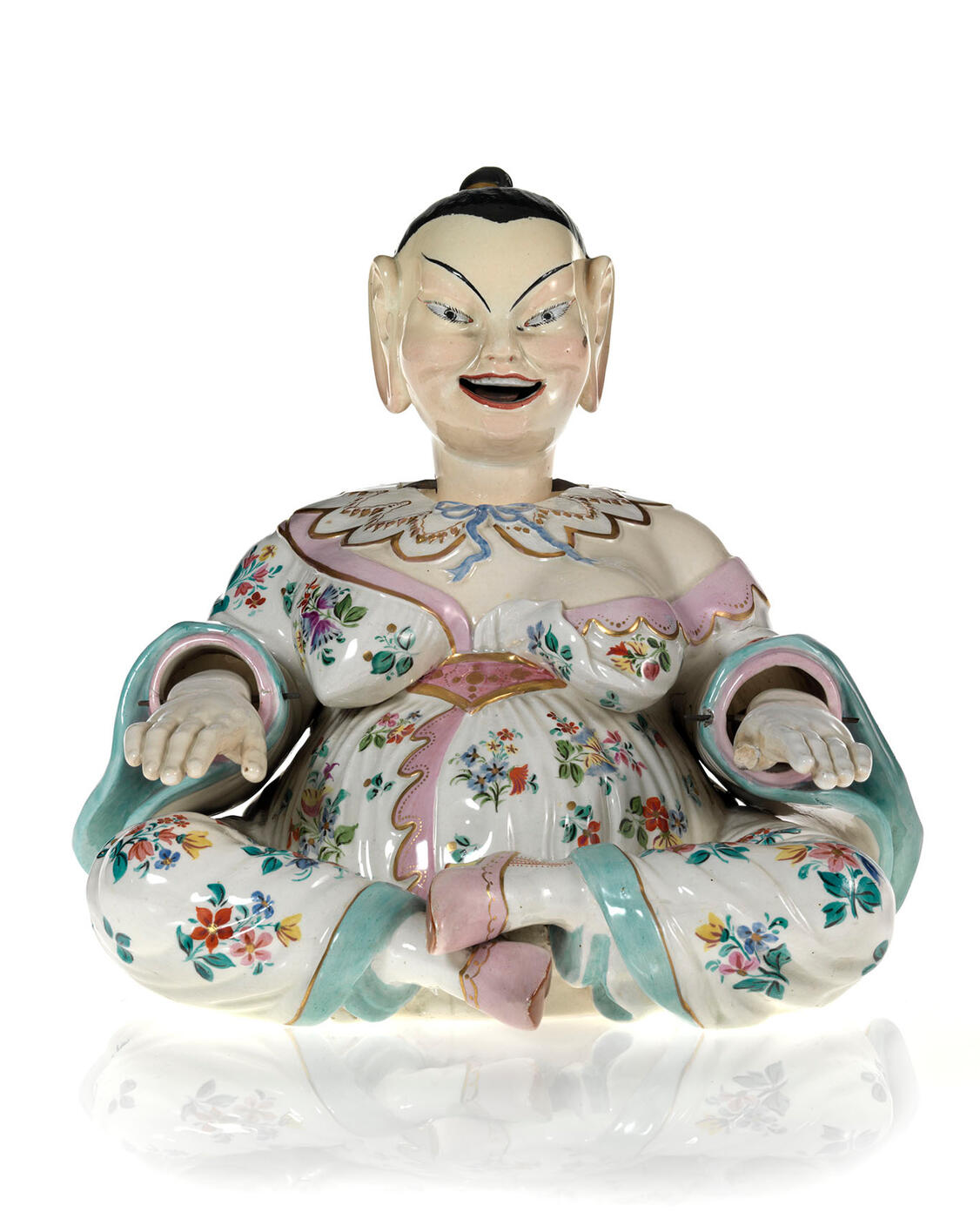MacDougall's Russian Art Auctions 25 March 2015
25 March 2015

* 43.
An Articulated Faience Figurine of a Buddha
10,000—15,000 GBP
S. POSKHOCHIN FACTORY, ST PETERSBURG, MID 19TH CENTURY
Height 20.5 cm.
with impressed manufactory mark
A sense of the refinement and harmony of Chinese culture was an integral part of the Rococo style in Europe. Richly coloured Chinese lanterns, painted screens, silks, lacquer miniatures and porcelain with stylised images of pagodas and dragons also came into fashion in Russia, and the artisans at privately owned porcelain manufactories duly mastered the art of “chinoiserie”. The range of produced items included amusing Chinese dolls such as the present lot – simple and gaily dressed figures with nodding heads and even the ability to stick out their tongue.
The original model for this work is the Pagoda figurine made at the Meissen factory in the early 1730s by Johann Kändler. The German artist was supposedly attempting to reproduce in porcelain an image of the blissfully smiling Buddha on the path to spiritual enlightenment. Pagoda was taken by Kändler as a general name, that was then used to describe all early Meissen Chinese figurines. Typically, the head and hands on this work are fixed with metal rods, bringing the statuette to life.
These figures remained in high demand in the 19th century and were often treated as good-luck charms. Their popularity is evident from frequent representation in paintings and drawings. Such is Meditation, a painting by the German artist Conrad Kissel, where the artist carefully reproduces all the subtle nuances of a porcelain Chinese doll.
Notes on symbols:
* Indicates 5% Import Duty Charge applies.
Ω Indicates 20% Import Duty Charge applies.
§ Indicates Artist's Resale Right applies.
† Indicates Standard VAT scheme applies, and the rate of 20% VAT will be charged on both hammer price and premium.